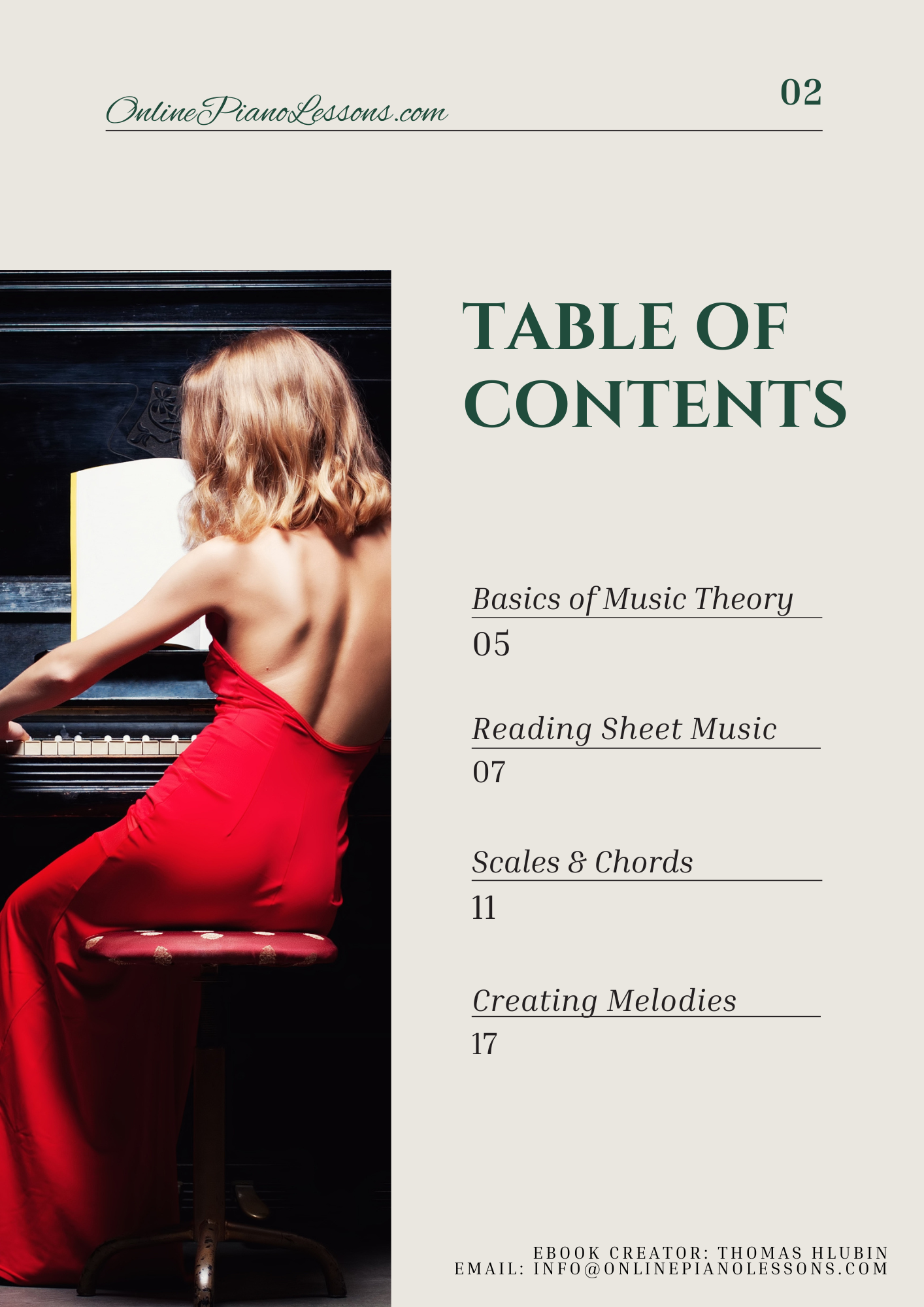When learning to play the piano, few things are more important than developing good technique — and that begins with piano fingering. A well-organized piano fingering chart helps players of all levels understand how to position their fingers efficiently, move smoothly between notes, and build long-term dexterity. Whether you’re just starting your musical journey or looking to refine your technique, understanding piano fingering and using a reliable piano fingering chart can transform your playing from clumsy to confident.
In this definitive guide, we’ll explore what piano fingering is, how it works, why it matters, and how to use a piano fingering chart effectively to improve speed, accuracy, and comfort at the keyboard.
Piano Fingering Chart
Below is a simple, copyable piano fingering chart for the most common major and minor scales. Use it as a reference while practicing daily:
| Scale | Right Hand Fingering | Left Hand Fingering |
|---|---|---|
| C Major | 1-2-3-1-2-3-4-5 | 5-4-3-2-1-3-2-1 |
| G Major | 1-2-3-1-2-3-4-5 | 5-4-3-2-1-3-2-1 |
| D Major | 1-2-3-1-2-3-4-5 | 5-4-3-2-1-3-2-1 |
| A Major | 1-2-3-1-2-3-4-5 | 5-4-3-2-1-3-2-1 |
| E Major | 1-2-3-1-2-3-4-5 | 5-4-3-2-1-3-2-1 |
| B Major | 1-2-3-1-2-3-4-5 | 4-3-2-1-4-3-2-1 |
| F Major | 1-2-3-4-1-2-3-4 | 5-4-3-2-1-4-3-2 |
| D Minor | 1-2-3-1-2-3-4-5 | 5-4-3-2-1-3-2-1 |
| A Minor | 1-2-3-1-2-3-4-5 | 5-4-3-2-1-3-2-1 |
| E Minor | 1-2-3-1-2-3-4-5 | 5-4-3-2-1-3-2-1 |
This piano fingering chart covers the most fundamental scales, which are the backbone of nearly all Western music. Practicing these patterns daily will dramatically improve your technical skills.
How A Piano Fingering Chart Works
A piano fingering chart is a visual representation showing which fingers to use for specific keys or scales. It often includes diagrams for both hands, with finger numbers written directly above or below each note. The goal is to create smooth, natural hand movements across the keyboard.
Here’s an example of how piano fingering looks in practice:
C Major Scale (Right Hand):
1 – 2 – 3 – 1 – 2 – 3 – 4 – 5
C Major Scale (Left Hand):
5 – 4 – 3 – 2 – 1 – 3 – 2 – 1
These fingerings are carefully chosen so that when you pass your thumb under (right hand) or cross your middle finger over (left hand), your hand remains relaxed and in position for the next notes. This principle applies to all scales and is clearly illustrated in a piano fingering chart.
What Is Piano Fingering?
Piano fingering refers to the specific assignment of fingers to notes while playing. Each finger on your hand is numbered to create a universal system:
Right Hand:
1 = Thumb
2 = Index Finger
3 = Middle Finger
4 = Ring Finger
5 = Little Finger
Left Hand:
1 = Thumb
2 = Index Finger
3 = Middle Finger
4 = Ring Finger
5 = Little Finger
This numbering system is the foundation of any piano fingering chart. It provides a clear reference for which fingers should play which notes, especially when practicing scales, arpeggios, and technical exercises. Without consistent piano fingering, your hand movements can become random, making it harder to play smoothly and accurately.
Why Piano Fingering Matters
Piano fingering is not just about comfort — it’s about efficiency and control. Here’s why it’s so crucial:
- Consistency: Using the same fingering every time builds muscle memory. When your fingers know where to go, your brain can focus on expression and timing instead of worrying about technique.
- Speed: Proper piano fingering minimizes unnecessary movement, allowing faster transitions between notes and smoother runs.
- Accuracy: Good fingering reduces mistakes by keeping your hand in the most natural position for the passage you’re playing.
- Comfort: The piano can be physically demanding. A correct piano fingering chart prevents strain and helps you play for longer periods without fatigue.
- Expression: With efficient fingering, you can play more dynamically and musically, because your hands aren’t struggling to reach notes.
How To Use The Piano Fingering Chart Effectively
Simply memorizing a piano fingering chart isn’t enough — you need to apply it consciously while practicing. Here’s how to get the most out of it:
- Start Slowly: Begin with one scale and practice it hands separately. Focus on smooth transitions, especially when passing the thumb under or crossing fingers over.
- Use Proper Hand Shape: Keep your fingers curved and relaxed. Avoid flat fingers or stiff wrists.
- Repeat With Intention: Play each scale multiple times using the exact fingering. The repetition helps ingrain the correct movements.
- Practice Both Hands: Many players neglect the left hand, but balanced development is essential.
- Listen To Tone: A good piano fingering setup ensures evenness between notes. Each tone should sound smooth and consistent.
- Apply To Songs: Once you’ve mastered a scale, identify where those fingerings appear in your pieces.
- Visualize Patterns: A piano fingering chart helps you see symmetry across keys — the logic of finger movements becomes second nature.
The Benefits Of Using A Piano Fingering Chart
A well-designed piano fingering chart offers more than just convenience — it builds a foundation for lifelong skill. Here are its key benefits:
- Faster Learning: Visual learners can quickly understand how finger numbers map across the keyboard.
- Better Accuracy: By following consistent fingerings, you reduce errors and hesitations.
- Improved Dexterity: Practicing from a piano fingering chart strengthens hand independence and coordination.
- Confidence Boost: When your fingers “know” where to go, your confidence skyrockets.
- Injury Prevention: Proper piano fingering reduces strain and repetitive stress injuries, especially during long practice sessions.
- Greater Musical Expression: Efficient fingering frees your hands to focus on phrasing, dynamics, and emotion — the essence of music-making.
In short, using a piano fingering chart is like giving your fingers a roadmap. The more you use it, the smoother your musical journey becomes.
Common Fingering Mistakes To Avoid
Even with a piano fingering chart, mistakes can happen. Here are a few to watch out for:
- Ignoring Finger Numbers: Random finger choices cause awkward transitions. Always stick to the chart until muscle memory develops.
- Tension In The Hands: If you feel tightness, stop and relax. Proper fingering should feel natural.
- Overreliance On One Hand: Practice both hands evenly to maintain balance and coordination.
- Skipping Warm-Ups: Cold fingers move slower and less accurately — start with simple scales from your piano fingering chart each day.
- Not Looking Ahead: Good piano fingering involves anticipation — plan your movements before reaching the next note.
How To Customize Your Own Piano Fingering Chart
As you progress, you may want to adapt certain fingerings based on hand size, repertoire, or comfort. Here’s how:
- Start with the standard piano fingering chart as a base.
- Note any passages where you feel awkward transitions.
- Experiment with alternate fingerings that feel smoother while maintaining legato phrasing.
- Write them down to keep consistency.
Advanced pianists often develop personalized versions of a piano fingering chart that complement their unique style — as long as the adjustments remain logical and efficient.
Final Thoughts
A piano fingering chart is more than just a learning tool — it’s the foundation for all good piano technique. By studying and applying the principles of piano fingering daily, you’ll unlock smoother scales, cleaner transitions, and greater musical expression. Remember: consistency is key. Use the piano fingering chart as your daily reference, and over time, you’ll find that your hands begin to move effortlessly across the keys. With patience and practice, what once felt mechanical will soon feel musical, natural, and free.
FAQ
What is the purpose of a piano fingering chart?
A piano fingering chart provides visual and numerical guidance on which fingers to use for each note or scale, improving efficiency and consistency.
Is piano fingering the same for everyone?
Not always. The standard piano fingering chart is a starting point, but players with different hand sizes or preferences may adjust certain fingerings slightly.
Can I play without using a piano fingering chart?
You can, but progress will be slower. Consistent fingering is essential for speed and accuracy, especially when playing scales or technical pieces.
How long does it take to master piano fingering?
With daily practice using a piano fingering chart, most beginners develop solid habits within a few weeks, though mastery continues throughout your piano journey.
Should I memorize the entire chart?
You don’t need to memorize it all at once — start with a few major scales, then gradually expand as your technique improves.







 Hi, I'm Thomas, Pianist Composer,
Hi, I'm Thomas, Pianist Composer,  I love playing piano, creating new melodies and songs, and further developing my online piano course and making updates/additions to my site OnlinePianoLessons.com!
I love playing piano, creating new melodies and songs, and further developing my online piano course and making updates/additions to my site OnlinePianoLessons.com!  Now that is what I call fun!
Now that is what I call fun!
